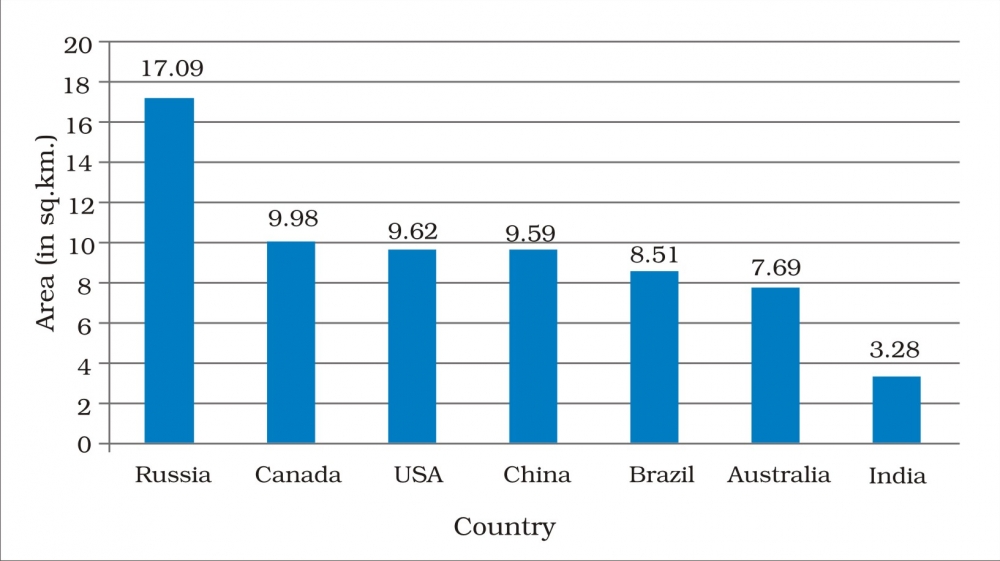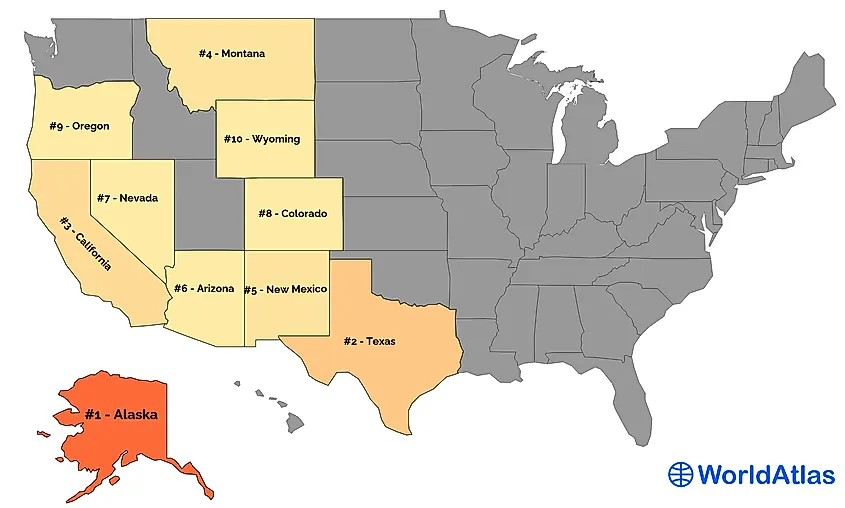These Are The 10 Largest in any context refers to a set of ten exceptionally large entities. Like "The 10 Largest Lakes in the World", a ranking of the ten most extensive bodies of freshwater on Earth, providing valuable information for geographers, tourists, and environmentalists.
Such rankings not only offer knowledge and perspective but also support decision-making, facilitate comparisons, and inspire further research. Historically, the identification of the "largest" has been integral to human understanding and categorization, tracing back to ancient civilizations' observations and measurements.
This article delves into ten of the most colossal entities across various categories, exploring their dimensions, significance, and captivating facts that will broaden your knowledge and understanding of the world.
These Are The 10 Largest
Identifying the "largest" entities in various domains is crucial for expanding our understanding of the world and facilitating informed decision-making. Essential aspects to consider when examining the "10 Largest" include:
- Size
- Scale
- Magnitude
- Volume
- Weight
- Area
- Capacity
- Height
- Value
Understanding these aspects allows us to compare, contrast, and appreciate the sheer size and significance of the entities being examined. Whether it's the largest companies, the largest cities, or the largest celestial bodies, these aspects provide valuable insights into their dominance, impact, and place within the broader context.
Size
In the context of "These Are The 10 Largest", "size" serves as a fundamental and defining characteristic. It is the primary criterion used to identify and rank the entities being examined. Size can manifest in various dimensions, such as physical dimensions (length, width, height), area, volume, capacity, weight, or even abstract measures like market capitalization or GDP.
The size of an entity significantly influences its impact, capabilities, and overall significance. For instance, the size of a company, measured by revenue or market capitalization, often reflects its economic power and global reach. Similarly, the size of a nation, measured by land area or population, influences its geopolitical clout and resource availability. In the scientific realm, the size of celestial bodies, such as stars or galaxies, affects their gravitational pull and luminosity, shaping the structure and evolution of the universe.
Understanding the size of entities is crucial for making informed decisions, conducting comparative analyses, and appreciating the scale and magnitude of the world around us. By examining "These Are The 10 Largest", we gain insights into the relative importance, dominance, and potential of various entities within their respective domains. This knowledge empowers us to make informed choices, develop effective strategies, and contribute meaningfully to our fields of expertise.
Scale
Within the context of "These Are The 10 Largest", scale encompasses the magnitude and scope of the entities being examined. It involves not only their sheer size but also their reach, impact, and implications.
- Global Reach
The geographical extent or global presence of an entity, indicating its international influence and impact. For example, the largest multinational corporations have operations spanning multiple countries, shaping global markets and economies.
- Economic Impact
The financial power and economic influence wielded by an entity. The largest companies often drive economic growth, innovation, and job creation, influencing industries and markets worldwide.
- Environmental Footprint
The impact of an entity on the environment, considering factors such as resource consumption, pollution, and waste generation. The largest industries and energy producers significantly shape global environmental trends.
- Historical Significance
The long-term impact and legacy of an entity, enduring over time and shaping historical events. The largest empires and civilizations have left lasting imprints on culture, politics, and society.
Understanding the scale of the "10 Largest" entities provides insights into their global reach, economic power, environmental impact, and historical legacy. This knowledge empowers us to make informed decisions, support sustainable practices, and appreciate the magnitude of the world around us.
Magnitude
Within the context of "These Are The 10 Largest", magnitude encompasses the sheer size, power, or significance of the entities being examined. It delves into their potential impact, reach, and implications on various scales.
- Global Influence
The extent to which an entity's actions, decisions, or presence have a global reach and impact. For instance, the largest multinational corporations have operations spanning multiple countries, shaping global markets and economies.
- Economic Power
The financial clout and economic influence wielded by an entity. The largest companies often drive economic growth, innovation, and job creation, influencing industries and markets worldwide.
- Environmental Impact
The impact of an entity on the environment, considering factors such as resource consumption, pollution, and waste generation. The largest industries and energy producers significantly shape global environmental trends.
- Historical Legacy
The long-term impact and legacy of an entity, enduring over time and shaping historical events. The largest empires and civilizations have left lasting imprints on culture, politics, and society.
Understanding the magnitude of the "10 Largest" entities provides insights into their global reach, economic power, environmental impact, and historical significance. This knowledge empowers us to make informed decisions, support sustainable practices, and appreciate the magnitude of the world around us.
Volume
Within the context of "These Are The 10 Largest", volume holds significant importance as a defining characteristic. Volume, referring to the amount of space occupied or the quantity of a substance, plays a crucial role in determining the size, scale, and impact of various entities.
Consider, for instance, the largest oceans in the world. Their immense volume influences global climate patterns, supports diverse marine ecosystems, and shapes the livelihoods of coastal communities. Similarly, the volume of water contained in the largest reservoirs is critical for water security, irrigation, and hydropower generation. In the realm of business, the volume of sales, revenue, or market capitalization often determines the size and influence of companies.
Understanding the volume of the "10 Largest" entities provides valuable insights into their capacity, potential, and impact. It enables comparisons, facilitates decision-making, and supports informed resource allocation. By examining volume as a key component of "These Are The 10 Largest", we gain a deeper understanding of the world around us and can make more informed choices in various domains.
Weight
Within the context of "These Are The 10 Largest", weight holds significant importance as a defining characteristic. Weight, referring to the force exerted on an object due to gravity, plays a crucial role in determining the size, scale, and impact of various entities.
- Gravitational Pull
The gravitational pull exerted by an object is directly proportional to its weight. The larger the weight, the stronger the gravitational pull. This concept is particularly relevant in astronomy, where the weight of celestial bodies influences their orbits and interactions.
- Density and Composition
Weight is closely related to density and composition. Denser objects have a greater weight for the same volume compared to less dense objects. This is because density reflects the amount of mass packed into a given volume.
- Structural Integrity
The weight of an object can impact its structural integrity. Heavier objects experience greater gravitational forces, which can affect their stability, durability, and resistance to deformation.
- Economic and Industrial Significance
In various industries, the weight of materials and products plays a crucial role in transportation, handling, and manufacturing processes. For instance, the weight of cargo influences shipping costs and logistics, and the weight of raw materials affects production efficiency.
Understanding the weight of the "10 Largest" entities provides valuable insights into their physical properties, gravitational influence, structural characteristics, and economic implications. By examining weight as a key component of "These Are The 10 Largest", we gain a deeper understanding of the world around us and can make more informed choices in various domains.
Area
Within the context of "These Are The 10 Largest", area emerges as a crucial defining characteristic. Area, referring to the extent or surface measurement of a two-dimensional space, plays a fundamental role in determining the size, scale, and impact of various entities.
Consider, for instance, the largest countries in the world. Their vast areas encompass diverse landscapes, ecosystems, and populations. The area of a country influences its economic potential, resource availability, and geopolitical significance. Similarly, the area of forests, oceans, and agricultural land significantly impacts global climate patterns, biodiversity conservation, and food security.
Understanding the area of the "10 Largest" entities provides valuable insights into their spatial dimensions, resource distribution, and environmental impact. It enables comparisons, facilitates land-use planning, and supports informed decision-making in various domains. By examining area as a key component of "These Are The 10 Largest", we gain a deeper understanding of the world's geography, resource allocation, and the interconnections between human activities and the natural environment.
Capacity
Within the context of "These Are The 10 Largest", "Capacity" emerges as a crucial defining characteristic. Capacity, referring to the maximum amount that something can contain or hold, plays a fundamental role in determining the size, scale, and impact of various entities.
- Storage Capacity
The maximum amount of data, goods, or resources that an entity can store or hold. For instance, the largest data centers have enormous storage capacities, supporting vast amounts of digital information.
- Production Capacity
The maximum output or throughput that an entity can achieve in a given time frame. For example, the largest manufacturing plants have high production capacities, enabling mass production of goods.
- Passenger Capacity
The maximum number of passengers that a vehicle or transportation system can accommodate. For instance, the largest cruise ships have impressive passenger capacities, catering to thousands of travelers.
- Service Capacity
The maximum number of customers or requests that an entity can handle or process effectively. For example, the largest call centers have high service capacities, allowing them to manage a large volume of customer interactions.
Understanding the capacity of the "10 Largest" entities provides valuable insights into their storage capabilities, production potential, passenger handling abilities, and service reach. It enables comparisons, facilitates resource allocation, and supports informed decision-making in various domains. By examining capacity as a key component of "These Are The 10 Largest", we gain a deeper understanding of the operational limits, scalability, and overall performance of these entities.
Height
Within the realm of "These Are The 10 Largest", "Height" emerges as a defining attribute, playing a crucial role in determining the size, scale, and impact of various entities. Height encompasses vertical measurement, elevation, and stature, influencing our perception and understanding of the world around us.
- Architectural Height
Height in architecture refers to the vertical extent of buildings and structures. The tallest skyscrapers, such as the Burj Khalifa, stand as symbols of architectural prowess and engineering marvels, reshaping skylines and urban landscapes. - Geographical Height
In geography, height denotes the elevation of landforms above sea level. The highest mountains, like Mount Everest, are testaments to the Earth's geological processes and natural wonders, influencing climate patterns and shaping ecosystems. - Biological Height
Height in biology measures the vertical growth of living organisms. The tallest trees, such as the coastal redwoods, exemplify the grandeur of nature's creations, providing habitats and contributing to biodiversity. - Astronomical Height
In astronomy, height refers to the distance above a celestial body's surface. The tallest mountains on Mars, such as Olympus Mons, offer insights into the geological history and comparative planetology of our solar system.
Comprehending the height of the "10 Largest" entities unveils their grandeur, scale, and significance. Whether it's the towering heights of architectural wonders, the majestic peaks of mountain ranges, the colossal stature of biological giants, or the astronomical heights of planetary features, height serves as a captivating lens through which we appreciate the diversity and magnitude of our world.
Value
Within the context of "These Are The 10 Largest", "Value" emerges as a multifaceted concept that profoundly shapes the identification, ranking, and significance of these entities. Value encompasses various dimensions, from intrinsic worth to economic importance, and plays a crucial role in determining the overall standing and impact of these entities within their respective domains.
Value serves as a critical component of "These Are The 10 Largest" as it provides a basis for comparison, differentiation, and prioritization. By assessing the value of entities, we can establish a hierarchy that reflects their relative importance, influence, and contribution. This understanding allows us to make informed decisions, allocate resources effectively, and identify potential opportunities or areas for improvement.
Real-life examples abound, showcasing the tangible impact of value within "These Are The 10 Largest". In the realm of business, the market capitalization of companies is a key indicator of their value, reflecting investor confidence, financial performance, and growth potential. Similarly, in the field of education, the rankings of universities often consider factors such as research output, faculty quality, and student satisfaction, providing valuable insights into their academic value and reputation.
The practical applications of understanding the connection between "Value" and "These Are The 10 Largest" are far-reaching. For investors, it guides portfolio decisions and risk management strategies. For policymakers, it informs resource allocation and economic development initiatives. For consumers, it empowers informed choices and value-based purchasing decisions. Moreover, this understanding contributes to broader discussions on wealth distribution, social equity, and sustainable development, highlighting the importance of creating value that benefits society as a whole.
Our exploration of "These Are The 10 Largest" has illuminated key ideas and provided valuable insights into the nature and significance of these entities. The concept of "largest" encompasses a range of characteristics, including size, scale, volume, weight, area, capacity, height, and value.
Throughout the article, we have examined the interconnections between these attributes and their impact on the ranking and influence of various entities across different domains. Whether it's the largest companies, the largest countries, or the largest celestial bodies, understanding these defining features allows us to appreciate their global reach, economic power, environmental footprints, and historical legacies.
As we reflect on the significance of "These Are The 10 Largest", a thought-provoking message emerges. The pursuit of size and scale has often been intertwined with progress, innovation, and economic growth. However, it is equally important to consider the potential trade-offs and unintended consequences associated with excessive growth or dominance. Striking a balance between scale, sustainability, and social responsibility is crucial for creating a more equitable and harmonious world. As we navigate the complexities of the 21st century, may the insights gained from this exploration guide our choices and inspire us to strive for a future where "largest" is not merely a measure of size but also a reflection of positive impact and shared prosperity.



Detail Author:
- Name : Jan Schimmel
- Username : hhegmann
- Email : wade.torphy@gmail.com
- Birthdate : 1977-07-13
- Address : 705 Oberbrunner Skyway North Rico, NV 69257
- Phone : 1-312-816-2879
- Company : Johnston, Waelchi and Connelly
- Job : Hand Trimmer
- Bio : Nisi rerum ea autem labore aut. Amet facere sint et voluptatem alias asperiores. Sapiente vel maxime alias ullam nemo. Ipsam nemo minus perferendis praesentium magnam.
Socials
instagram:
- url : https://instagram.com/ernie_dev
- username : ernie_dev
- bio : Quam ut est quibusdam perspiciatis iusto quis quis. Dignissimos est veritatis voluptas pariatur.
- followers : 5926
- following : 2727
twitter:
- url : https://twitter.com/elang
- username : elang
- bio : Et itaque debitis et nostrum. Qui illo quidem numquam dicta quisquam voluptates voluptates. Iure repellendus dolorum quae aut vitae.
- followers : 2677
- following : 930